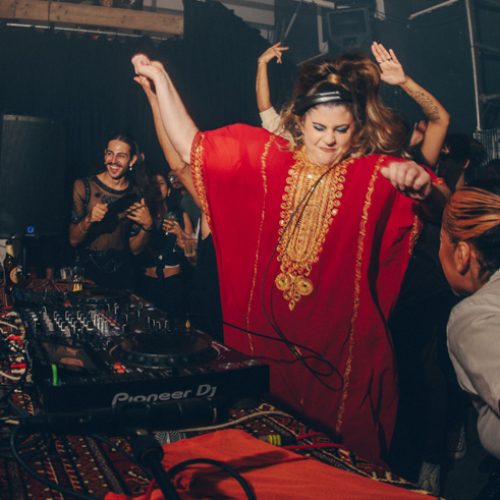With the region spanning vast geographical grounds, no standard “Arab sound” can be defined.
The history of music in the Arab world dates back to ancient times. As time went on, and as technology evolved, so did music, and it seems that the love Arabs carry for music simultaneously grew with it. By the 1900s, artists across the region were shot into stardom, shaping new genres along the way that continue to influence artists to this day.
To celebrate the figures behind the sounds of today, from Morocco to Kuwait, we look to the region for the artists that shaped Arab sounds.
Sayed Darwish – Egypt
After mastering the recitation of the Quran, and a brief stint studying religion at al-Azhar University, Sayed Darwish pursued a career in the music industry. In 1918, Darwish decided to break into the world of Opera. As years went on, the artist started to experiment with different sounds, eventually moving away from then-popular Orientalist tunes and innovating what is now considered classic Egyptian music. For that, Darwish is considered by many as Egypt’s greatest composer.
Mahmoud Guinia – Morocco
Born in 1951 to two Gnawa musicians, it was only natural for Mahmoud Guinia to go on to make a name for himself within the genre. Today, the Gnawa master—known as a Maallem—became a pioneering force in the genre, which remains a huge source of influence for more modern Moroccan sounds.
Om Kalthoum – Egypt
No list of influential Arab musicians is complete without Om Kolthoum.
Much like Darwish, Om Kalthoum’s musical beginnings can be traced back to Quranic recitation. Dubbed the ‘Voice of Egypt’ Om Kalthoum’s voice was unparalleled at the time, leading to a stratospheric rise to stardom. But although her vocals and style are certainly factors into her influence, Om Kalthoum broke away from tradition, and took classic sounds—which were usually exclusive to elite circles—to the general public.
Cheikha Rimitti el Reliziana – Algeria
Rai music evolved in the early 1920s, but it wasn’t until the 1950s that the genre would become widespread—thanks in part to Cheikha Rimitti el Reliziana—who shot to fame as one of its most prominent figures. Despite her controversial lyrics, which generally went against Muslim principles, the singer continued to carry a fanbase within working-class communities, although extremely disliked (and banned) by Algerian authorities. By the 1980s, when Rai became established throughout North Africa, Rimitti was quickly dubbed ‘the grandmother of Rai’.
Hedi Jouini – Tunisia
Known as the godfather of Tunisian music, Hedi Jouini’s legacy stands to this day. Having composed over 1,000 songs, many of which were inspired by flamenco, Jouini invented what is known today as the sound of Tunisia. The singer has also been dubbed ‘Tunisia’s Frank Sinatra’ with songs like ‘Taht el Yasmina fi Lil’ and ‘Samra’, a group of songs that resonated with Tunisian society in a way that hadn’t been done before.
Aysha Al Marta- Kuwait
For many Kuwaitis, and Arabs all across the region, Aysha Al Marta is a musical icon. The late singer made a name for herself in the 1960s, thanks in part to the depth and rawness of her voice. Her sound is a preliminarily example of Khaleeji music. Her songs continuously inspire new generations of singers throughout the region, with Yasmine Hamdan citing her as one of her five musical icons.









